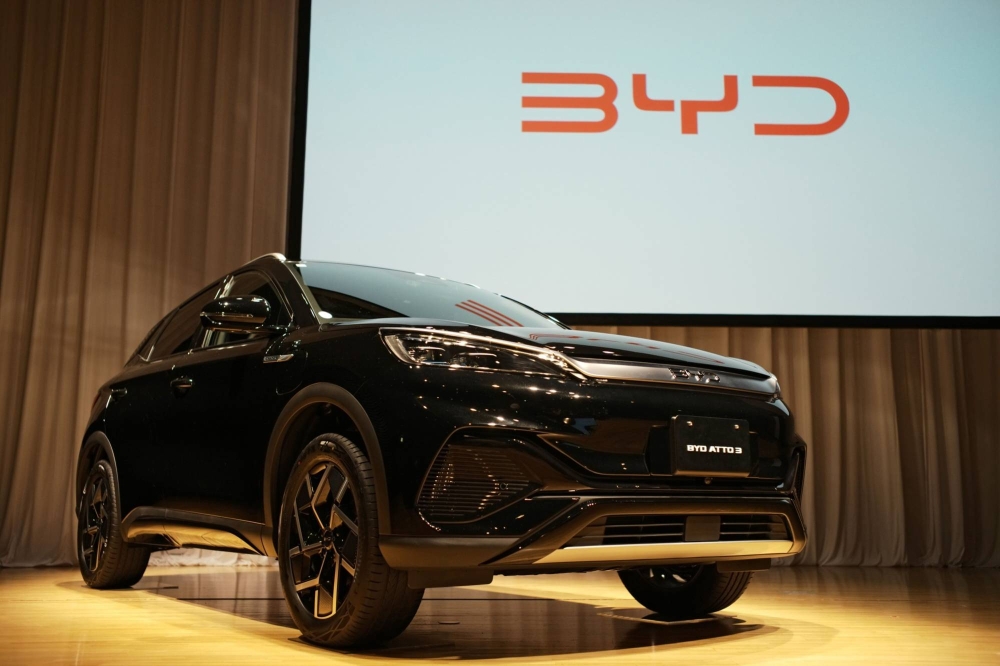
The European Union is poised to unveil a new tariff structure for electric vehicles (EVs) imported from China this week. This move is part of the EU’s strategy to address concerns over low-priced, subsidized imports that are perceived to pose a threat to the European EV market.
Currently, the EU imposes a standard duty of 10% on all imported electric vehicles. However, effective from July 4, this rate is expected to increase specifically for Chinese EV imports. Analysts from Citi, on Monday, projected that tariffs could surge to approximately 25-30%, from the current rate. Additionally, there is a risk scenario, deemed 40% likely, where the tariff could escalate further to 30-50%.
Contrastingly, Anthony Sassine, a senior investment strategist at KraneShares, suggested a more moderate increase, predicting that tariff rates might settle between 10% and 20%. However, following the European Parliament elections last week, where Ursula von der Leyen’s European People’s Party gained seats, Sassine anticipates the higher end of this range might be more probable. Von der Leyen, president of the European Commission, has been an advocate for a strategy of “de-risking” economic relations with Beijing.
The European Commission initiated an investigation in October into the subsidies provided to Chinese EV manufacturers. The EU alleges that these subsidies have allowed Chinese manufacturers to offer their EVs at prices that undermine the economic stability of the European EV industry.
Despite potential new tariffs, experts like Sassine believe that the inherent efficiency and advanced status of Chinese manufacturers will mitigate the impact of these tariffs. Speaking to CNBC’s “Squawk Box Asia,” Sassine noted that even with the increased tariffs, Chinese EVs would remain competitive against their European counterparts.
The rising prowess of China’s EV industry, supported by significant government incentives, has also stirred concerns of market overcapacity in other regions, including the U.S. In March, U.S. Energy Secretary Jennifer Granholm also echoed apprehensions that China could dominate the U.S. EV market, leading to the Biden administration significantly increasing tariffs on Chinese EV imports to 100% in May, up from the previous 25%.
Similar measures have been seen elsewhere, with Turkey announcing a 40% additional tariff on Chinese vehicle imports as recently as June 8.
Despite the ongoing EU investigation, Chinese EV makers are aggressively expanding their presence in Europe. Companies like Xpeng and BYD have been actively showcasing their models across the continent, with Nio recently opening a new showroom in Amsterdam. BYD has even committed to constructing a new factory in Hungary, and Chery entered a joint venture with Spain’s Ebro-EV Motors in April to develop new EV models.
Cedomir Nestorovic, a professor of geopolitics at ESSEC Business School, highlighted the proactive strategies of Chinese manufacturers in avoiding tariffs. According to Nestorovic, these companies are setting up manufacturing facilities within Europe, which not only helps circumvent tariffs but also strengthens their foothold in the market.
Proposed Changes to EU Tariffs on Chinese EVs
| Scenario | Current Tariff | Proposed Tariff | Probability |
|---|---|---|---|
| Base Case | 10% | 25-30% | 60% |
| Risk Scenario | 10% | 30-50% | 40% |
- Economic Impact: Increased tariffs could raise the cost of Chinese EVs in Europe, potentially slowing their market penetration.
- Market Dynamics: European manufacturers might gain a temporary reprieve, giving them time to innovate and compete more effectively.
- Consumer Choices: With higher tariffs, European consumers might face higher prices, affecting overall adoption rates of EV technology.
As the EU navigates these complex trade dynamics, the decisions made in the coming days will have far-reaching implications not only for the auto industry but for the broader geopolitical landscape involving Europe, China, and other global players.
Related News:
Featured Image courtesy of The Japan Times
